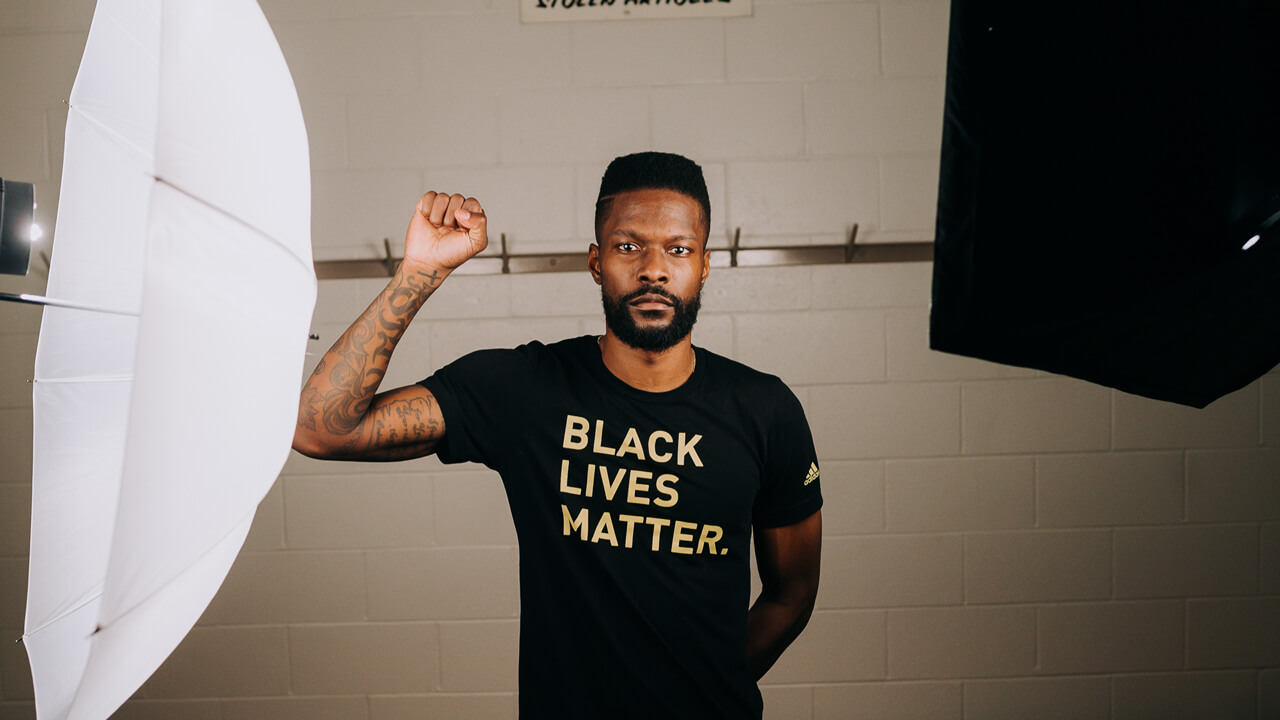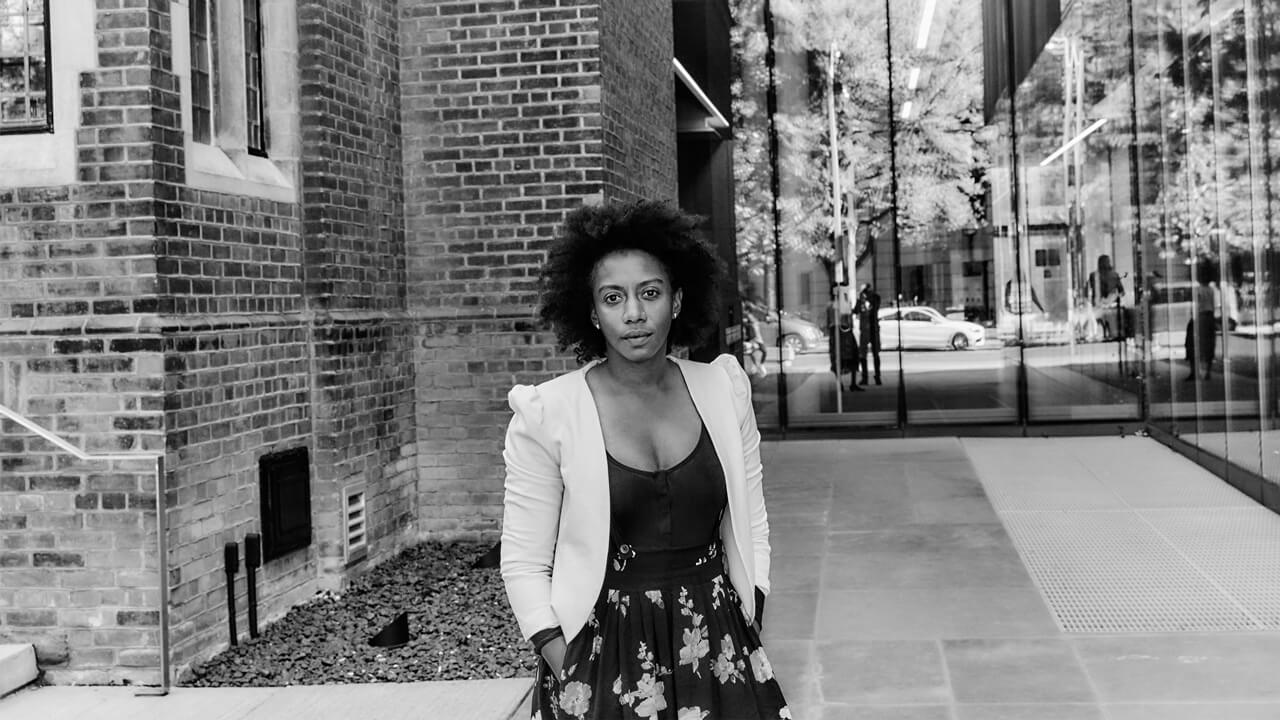The skating stride looks smooth and precise, honed on the ice over hours, days and months. But on this sweltering summer day in Scarborough, blades have been swapped for wheels on the CCMs carrying Akil Thomas forward.
Nearby, a camera tracks his every movement as he flies up and down this suburban lane, flips a tennis ball in the air, spins and whips his stick to redirect the floating target top corner.
A crisp grey cap, sitting backwards with the brim pushed up just so, matches the T-shirt he’s donned for the occasion. Both are emblazoned with one word: “Zale,” the name of the clothing company founded by the young Los Angeles Kings prospect whose dreams extend beyond the Staples Center walls.
It’s far from the first time Thomas has had a camera on him. The duffle sitting a few feet away along the curb hints at that spotlight experience, a custom tag hanging off its side bearing Thomas’s name below the red, white and gold of Hockey Canada’s familiar logo.
If you’ve heard his name, you’ve seen the footage of the last time he and that logo went to work — of his mad dash across the blue line in the final minutes of the 2020 World Junior Championship gold-medal game. Of the feathery touch that pulled the puck just far enough away from Russian netminder Amir Miftakhov and allowed Thomas to backhand it into the cage as he tumbled to the ice. A tournament-winning, medal-clinching flurry.
This time, there’s no crowd on hand, no medals to be handed out. But the impact of this performance might be no less fundamental to who Thomas is and what he means to the hockey world. When the footage is eventually released, it’ll be backdropped not by the cacophonous din of a packed rink but by a steady beat, the relentless hum of a deep bass line and a collection of rhymes from Buffalo rappers Conway the Machine and Balistic Man.
It’s the first time Thomas has been asked to shoot a music video. It was longtime family friend Damon Kwame Mason who brought the project to him after the filmmaker was pitched on the idea by the track’s two producers — Toronto brothers Adrian and Lucas Rezza, otherwise known as 80 Empire — who saw Thomas’s journey in the game as a perfect encapsulation of their song, “Legacy.”
Though for Thomas it was little more than a few hours’ work amid a hectic daily schedule that rarely lets up, the footage offers a glimpse of the Scarborough native’s unique place in the game, the novel role he’s already carved out for himself at 21 years old.
This role is never clearer than when Thomas appears on screen with Mason and Elijah Roberts — a close friend and former teammate whose own on-ice journey is also highlighted throughout the video — all three staring holes in the lens. It’s a nexus point of the different paths Thomas has traced up to this point — standing alongside Mason and Roberts, with whom he launched a podcast last summer to highlight important BIPOC voices in the game; draped in gear from the clothing line he runs while chasing his big-league dream; bridging the gap between the hockey world and a dimension of music and culture it has rarely embraced. These are the many sides of Akil Thomas, all in a single shot.
Entering his first season of professional hockey with the AHL’s Ontario Reign this year, those simultaneous pursuits have Thomas redefining what it means to be young and Black in the pro ranks. In a sport that so often urges young prospects to keep their heads down and shed any sense of individuality — particularly in the case of Black players — Thomas has proven unafraid to be unapologetically individual. Now the young King is trying to change the game as he comes up within it.
It would be difficult to imagine a version of Thomas without hockey. The son of longtime pro Kahlil Thomas — whose own career took him everywhere from Flint to Jacksonville to Memphis to St. John’s, along with a half-dozen other stops — the younger Thomas grew up trailing his dad like a shadow in the arena. “I was around hockey 24/7. I didn’t go to daycare. I went to the rink with my dad every day,” he says. “I grew up around the rink, eating bubblegum in the locker room, skating before or after practice.”
Mason first met Thomas before his OHL days, when the latter was just a local phenom in Toronto hockey circles. A family connection brought the two together, Mason’s father having known Thomas’s grandmother. Even in those days, there was something intriguing about him. “You could just see how special he was,” Mason remembers. “On the ice … off the ice, with his teammates. He just has this aura about him that, you know, that’s hockey. If you’re around him, you can just tell, ‘Okay, he’s destined to be in this hockey space.’”
Thomas has made good on that potential over the years. He put together a sterling junior career that saw him amass 315 points through 241 OHL games. He authored a historic moment on the national stage that vaulted him into the rarified air of Canadians who’ve tallied tournament-clinchers. And he saw his path to the big leagues begin to take shape by way of the Kings’ 51st-overall selection at the 2018 NHL Draft.
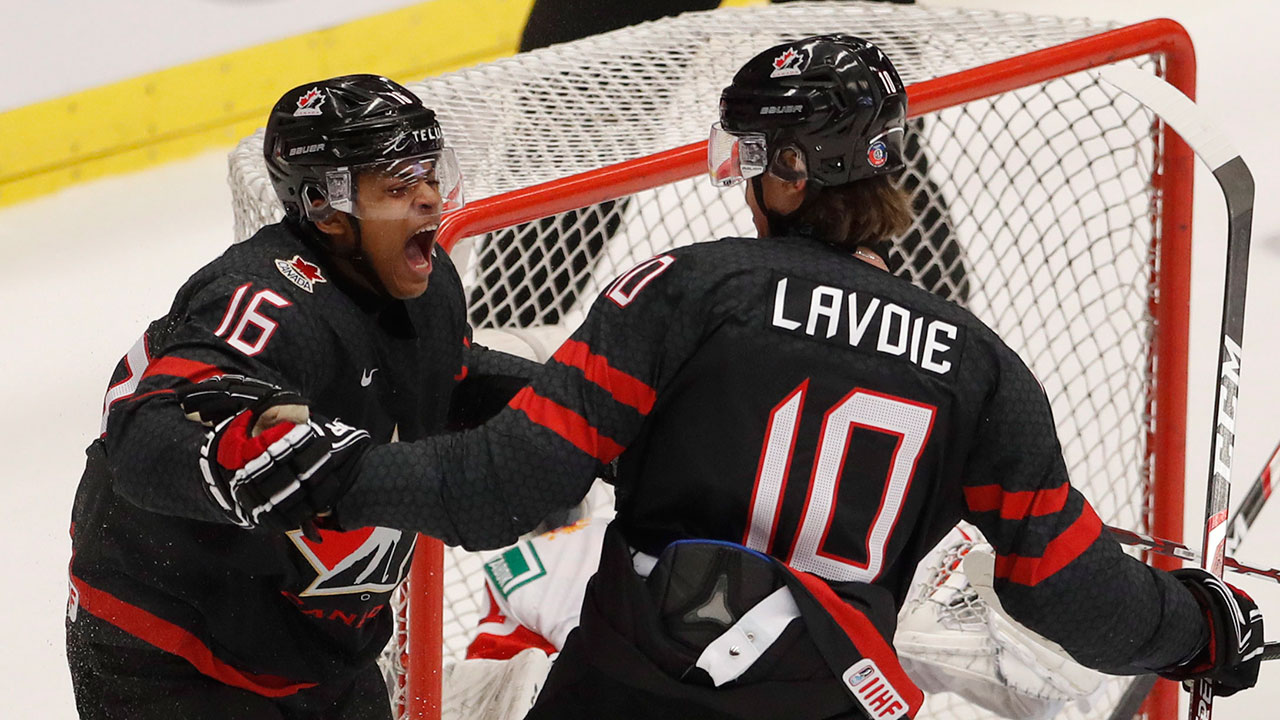
And somehow, in that same timespan, the ever-turning gears that make Thomas a top-tier playmaker allowed him to make a play for the fashion world, too — though the origin story of Zale Apparel is tied more to securing short-term cash flow than a masterful branding long game.
“When I was 13, I was going to Upper Canada College…. Things were tight growing up, and I remember just brainstorming on how I could generate a bit of income so I wouldn’t have to ask my parents for bus fare every week,” he says, recalling the subway trips that took him from Scarborough to the downtown campus. “It was kind of costly throughout the year — it kind of added up. So I just started selling hockey T-shirts.”
He linked up with close friend Ethan Low, whose eye for graphic design allowed the two to create tees adorned with hockey slogans — high fashion to teenage eyes. “It would just say hockey slang like ‘dangler,’ and there would be chirps on the T-shirts — kind of cringey when I look back on it,” Thomas says with a laugh. “But I guess it was what we were interested in when we were 13.”
Two years later, the duo decided they wanted to graduate from T-shirts to a proper apparel line. Step No. 1 was settling on a name and a logo — a decision the 15-year-olds didn’t take lightly.
The logo, a stylized trident, was chosen to pay homage to Thomas’s mother, Akilah, and the flag of her native Barbados. It also opened the door for a name tied to Greek mythology, so Thomas and Low spent hours poring over names, words and meanings. “We knew we wanted a three- or four-letter word. That’s just ideal for names on items of clothing. It just looks cleaner,” Thomas explains. “We found ‘Zale,’ and it kind of rolled off the tongue. It means ‘power of the sea.’”
Between the tie to Barbados and Thomas’s own upbringing in Florida during his Dad’s playing days States-side, it was a perfect fit.
Celebrating the spirit of inclusion in the game, Sportsnet and Scotiabank unite to bring an all-day NHL broadcast to Canadian fans coast-to-coast-to-coast.
Six years on, the line is establishing a solid footing in the apparel world, driven in no small part by Thomas’s ascent in the hockey world. While some bigger names in the sport have made forays into the clothing business in the past, partnering with established companies to capitalize on their all-star popularity, few, if any, have gone this route — growing a line and a brand from the ground up. Offer a question or two to Thomas about the company and the core reason for its success emerges quickly, and unintentionally, in his earnest approach to growing the business.
“Our main goal is just to build a brand — that’s the biggest thing we try to focus on, building the brand. Because obviously people want quality items, but at the end of the day if they don’t feel attached, or if they don’t have a reason to buy an item of clothing, they’re not going to buy it,” he says. “So, we’re really just trying to build something that people can really feel a part of, and there’s a lot of different ways you can do that.
“We definitely don’t want to just stick to clothes,” he adds. “We want to make an impact in our communities and communities all around the world.”
An unexpected bit of early success has meant expanding Zale’s team, bringing in additional hires to manage the day-to-day business and allow Thomas and Low to focus on the overall vision of a company that’s well beyond a side-hustle at this point. But while some see a daunting distraction for a prospect trying to claw his way to the big leagues, Thomas sees a welcome outlet for the passion that will take him there, a means to keep him focused on that central dream.
“My whole life is hockey, hockey, hockey. So, it’s almost a good thing that I have something to kind of take my mind off that for just a minute,” he says. “I’m the type of guy, if I have a good or a bad game, I’m thinking about my shifts after the game — like, a lot. I’m being anxious about it. If I had a bad game, you know, before the next game I’m thinking about what went wrong the last game, I’m thinking about how I’m going to try to change that. And if you overthink things it’s definitely going to show on the ice. So, just having something to kind of reset me at home and just something else to focus on throughout the week, it’s good. It keeps me fresh, it keeps me hungry for hockey. I like the balance, to be honest.”
It brings balance of another sort, too, says Mason. “I think these kids now have mastered the ability to multitask. They look up to guys like LeBron James and these athletes that are not only great at their sport, but great businessmen off-court,” he says. “They’re more than just athletes on the ice. They’re also a brand, and they’ve got to think, ‘I don’t want to just play hockey.’”
That sense of being more than just an athlete is important, too, in helping prepare Thomas for the day he’ll no longer be an athlete at all. He’s seen the difficulty of that transition play out first-hand. “When I was younger, I saw how my dad’s life changed when he retired,” he says. “He didn’t go the college route. He went straight to pro, so he didn’t really have anything to fall back on or anything like that. So, when I look at it now, it’s kind of starting something while I’m playing, so if things go well I can have something to fall back on as well.”
While Zale has given Thomas an outlet to wear his heritage on his chest, his work with Mason and Roberts on Soul on Ice: The Podcast has granted him a path to make change with his voice.
The idea to enter the podcast game had been kicked around by Thomas and Roberts more than a few times in the past. In fact, the seamless banter between the two during their days as teammates with the OHL’s Niagara IceDogs led enough people to suggest the idea that it became a running joke in the dressing room. When the COVID-19 pandemic brought daily routines to a halt, clearing schedules for athletes at every level, the duo decided to give it a go. Recruiting Mason, who brought both extensive radio experience and an established voice on issues of racism in hockey, was a must. “I was like, ‘That could be a cool dynamic — the old guy with the young bucks,’” Mason says. “I got the experience being able to do that radio type of format and interview, and I can point them in the right direction and just let them loose. They’ve got the experience in the game of hockey, so they can talk that game from the players’ point of view.”
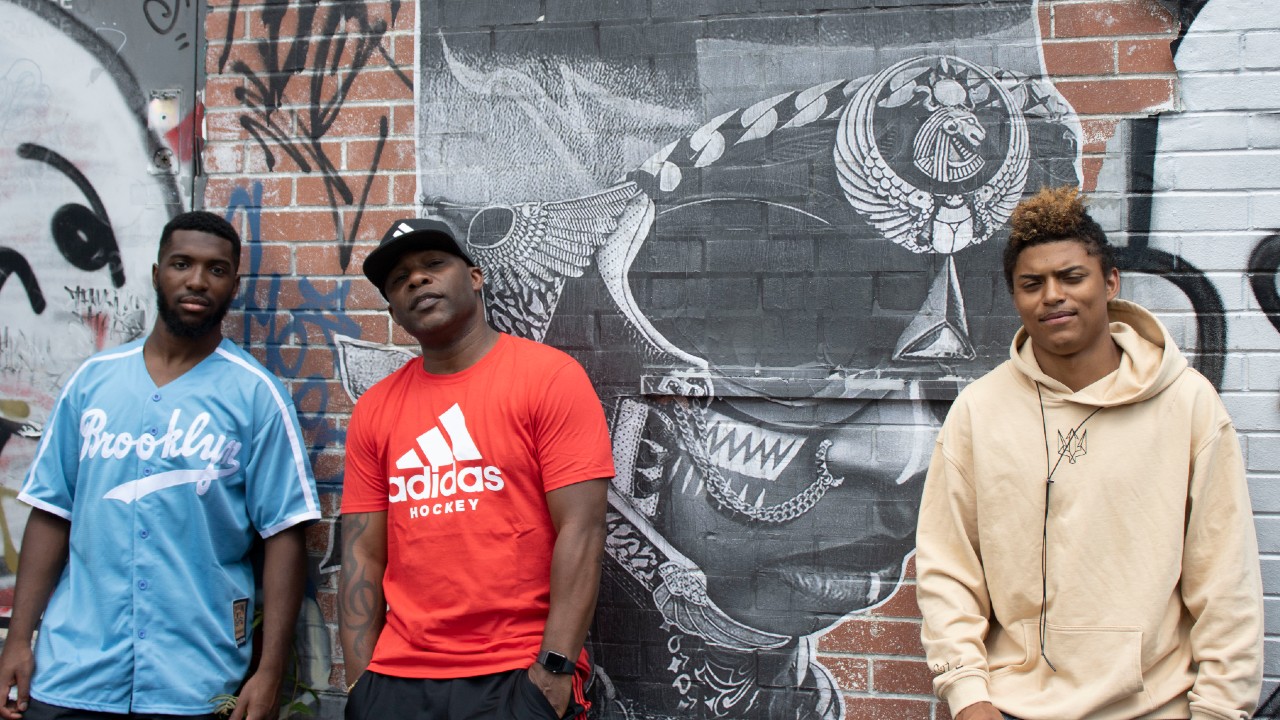
While a few podcasts from former or current hockey players have emerged in recent years, none before has tracked the week-to-week path to NHL stardom from the prospect’s perspective. A recent episode recorded a night after Thomas tallied a shootout goal in one of his first AHL tilts captured that unique angle perfectly. Discussion of the marquee career moment led to a breakdown of how the young Kings prospect approaches those one-on-one situations, with he and Roberts (who’s playing his first year with Ryerson University) launching into a back-and-forth about the merits of going five-hole, and how to avoid overthinking the pressure of the moment.
“Looking towards the future, you’ve got this weekly podcast with this kid who’s been drafted to a team in the NHL, and you get to hear about [his journey],” Mason says, excitement building in his voice. “I can’t wait ’til we can get to that point where he’s like, ‘Boys, I got the call-up. I’m going to The Show,’ and we can just talk about that experience.”
For his part, Thomas is unfazed by the idea of living his big-league dream out in the open. “I have a long way to go, but at the same time, it’s a pretty exciting time for me. And maybe for listeners to see how my life is in my first year pro, just trying to make it to the NHL, I think it’s kind of interesting,” he says. “And maybe even for a couple parents out there who have kids coming up, it may be good to listen to my experiences, what I’m going through, the challenges and the stuff that worked for me.”
Count that among the many things Soul on Ice takes on that no one else has before. The clearest one, the one alluded to in the show’s name, is also perhaps its most impactful — the podcast plays a crucial role within the hockey landscape by consistently highlighting BIPOC voices and stories.
But while that role can often require casting a spotlight on the systemic flaws that impact those voices, the show doesn’t present the Black experience in hockey as one grounded only in pain and hardship. Rather, it allows the lines to blur between discussions of the sport, music, fashion and culture in general. An episode with Thomas’ AHL teammate Quinton Byfield — who became the highest-drafted Black player in history when the Kings tabbed him at second overall in the 2020 draft — saw the two L.A. prospects quibble over whose bow-tie game originated first, and hit hardest. Another with breakout Pittsburgh Penguins defenceman Pierre-Olivier Joseph featured the rookie explaining his gameday fits, and how he injects more personality into formal looks. The hosts routinely ask their guests to offer up their top five hype songs, putting out the lists on social media and compiling them into a playlist for listeners.
All that said, when more poignant issues concerning the Black community do arise, whether they be within the sports world or outside of it, the hosts embrace those conversations, too — particularly Thomas and Roberts, part of a bold new generation of young Black hockey players sidestepping the usual pressure to quietly conform.
“On one of our early shows, we talked about George Floyd, and that situation. Those boys talked about it without flinching,” Mason says of his young co-hosts. “I don’t think 10 years ago you could’ve gotten a Black hockey player, young in the league, to even say the words ‘George Floyd.’ Or ‘Black Lives Matter.’ I don’t think you could do that. But now, they can.”
Rogers is on a journey to build a more inclusive future for our team members, customers and communities across Canada. For more info on how, click here.
This space created for Thomas and other young BIPOC hockey players, to speak more openly and live more freely, wasn’t simply the result of the game’s natural growth. It was carved out and fought for with hope and intention. Mason played a pivotal role in that effort, his greatest contribution being the film bearing the same name as the podcast he now co-hosts. But back before his 2015 documentary Soul on Ice: Past, Present and Future took the hockey world through a masterclass on the forgotten contributions of its Black leaders, Mason found himself, like many, adoring a game that refused to show him that same love.
“Around that time, there was no conversation about racism in the game. There was none,” he says of the months and years leading up to him beginning work on the project. “Unless something happened — so, for example, this was around the same time that stuff happened with Joel Ward in Washington.”
That stuff, specifically, consisted of a torrent of racist tweets launched at Ward after he scored the series-clinching goal to eliminate the defending-champion Bruins during the 2012 post-season.
“The last time they talked about race in hockey [before that] was Wayne Simmonds in London, Ontario, when they threw the banana. Every time they talked about race in the game of hockey, it had to do with the pain of a Black athlete,” Mason says. “Like, that’s all the conversation was — it wasn’t about our contributions and our history.”
Mason’s film, and its detailed education on the history of the Colored Hockey League of the Maritimes, and the first Black NHLers, opened the door for the hockey community to shift its approach. It allowed for a celebration of Black excellence on the ice, even if the game wasn’t yet ready to deal with the systemic issues that routinely worked against it. “As far as how I feel Soul On Ice: Past, Present and Future helped get us to where we are, I look at it like this: When that film came out, I feel like the industry looked at something and said, ‘Okay, we can actually talk about this without it being something to be afraid of discussing,’” he says.
At the same time, for those outside the hockey world, it gave them reason to inch a bit closer to the window and peer in. “The film also gave an opportunity, that the industry saw, to introduce the game to a group of people that had never seen themselves in that light, you know? That’s the most Black you will ever see on one film talking about playing hockey. Ever.”
Its impact hasn’t faded with time, either, says Kim Davis, the NHL’s executive vice president of social impact, growth initiatives and legislative affairs. “It’s a durable piece, because even today you have clubs and organizations that are still looking at it, are still learning from it,” she says. “I think it has been such a way of opening eyes and opening minds and building people’s understanding that this business of inclusion, and creating inclusion, and normalizing inclusion, is a year-round sport.”
Half a decade after the film’s release, the hockey world finds itself in a new era, its younger generation emboldened to use their platforms in ways that would’ve sparked chaos in years past. “These kids have that opportunity to voice themselves and not have the backlash they would’ve had 20 years ago,” says Mason, who documented the details of what exactly that backlash looked like in his landmark film.
The progress isn’t lost on Thomas, nor is the responsibility to take advantage of the platform he’s been given. “It’s a different world these days. It’s a different sport. And I think a guy like me is kind of a part of why it is,” he says. “Hockey players having opinions for the first time is not a bad thing — it’s a good thing. We’re allowed to have personalities. We’re allowed to start clothing companies and be active on social media. It’s not just the basketball players and the football players that can have a brand.
“I think, just like the game of hockey has changed, the culture of hockey is also changing. And I definitely want to be a part of that.”
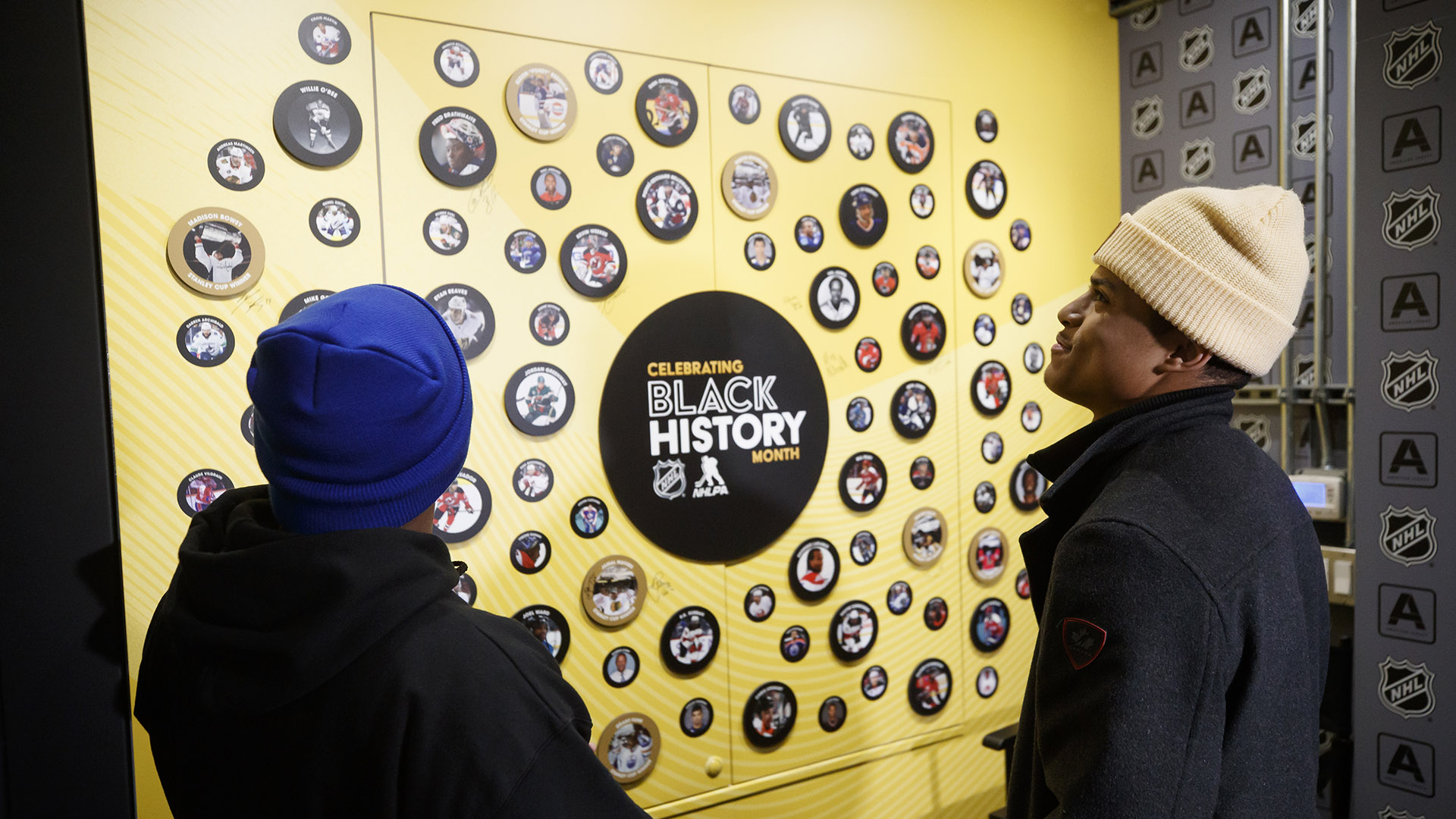
Thomas isn’t naïve to the other side of the equation, though. His conviction to use his voice and speak up on issues he cares about isn’t built upon a life unblemished by prejudice. It’s informed, rather, by a history in the game that runs longer than his own, and by hours of discussion with his dad readying him for what will come. “A lot of our conversations have been driven by him trying to prepare me for all the stuff that I’m going to see. And it’s not necessarily just, you know, people saying racist stuff. It’s actually a lot of things behind the scenes that are kind of unexplainable,” he says. “You only really know if you’re a Black hockey player.”
Thomas experienced that uncomfortable reality firsthand ahead of the 2018 NHL Draft, as big-league scouting staffs turned their attention to the prolific OHL scorer. Years of dedication to the dream aside, unexplainable questions still managed to find their way into quiet conversations.
“I’m a pretty good kid — I was never in trouble when I was younger, I was good at school, I always had good grades. But I remember my draft year there were people questioning my character,” Thomas says. “And I remember my head coach in Niagara just being like, ‘I don’t know what’s going on, but we’re getting questions about your character.’ And he’d just keep saying, ‘He’s an awesome kid — there’s no problems, no red flags, anything.’
“I’ve never even been in detention in school,” Thomas says with a quiet laugh landing somewhere between disbelieving and pained. “So yeah, it’s definitely something that I’ve been aware of, and my dad’s prepared me.”
While Thomas prepares for a life in the big leagues that may bring more uncomfortable questions, the big leagues prepare for a future led by those like him. “I think that a lot of the future of our culture is going to be absolutely dictated by young, bold, courageous and fearless players like Akil, and so many others,” Davis says. “I think this generation has a very different view of inclusion and normalizing any kind of difference, whether it be sexual orientation, gender, ethnicity — I think that they understand, and it’s their lived experience, to be much more inclusive. We will learn from them, and we will prosper by learning from them.”
There’s a phrase in that same vein that Mason returns to when conversations drift to how the game can be pushed forward. It’s simple and effective, easily understood in its potential to make change, and yet a poignant reminder of what the sport still lacks: “Normalize minority faces and voices in the game of hockey.”
It’s the philosophy that guides the Soul on Ice project, the film and the podcast it birthed both serving as efforts to continue putting new faces in the hockey world’s field of vision, until they no longer seem new at all.
“Make it normal. When it becomes normal, then it’s not surprising to see a commercial with Jay-Z rhyming and Wayne Simmonds in the background doing some sick moves, you know what I mean? … If you were to see a commercial like that right now, it would blow your mind,” he says. “If you saw Snoop Dogg and Quinton Byfield in a commercial, it would make you stop. You’d want to check it out, rewind it. But we’ve got to make that normal.”
For the hockey community, that need extends past the ice, into the stands, onto TV screens, everywhere. “You’ve got to see women in these broadcasts,” Mason continues. “And I know that there’s a lot of women that have been doing broadcasts in hockey, but we need to see some women of colour in these broadcast spaces talking about hockey. We just need to see minorities — Hispanic, Indigenous, all of us who are already out there, involved, loving the game. We just need to see your faces more. We just need to hear your voices more. And when we do that, the next generation is going to grow up like, ‘Yeah, that’s normal.’”
If the approach seems simple, it’s because it is — as simple as the well-established impact of representation, of opening doors and breaking down walls, of relinquishing power for the sake of progress. Mason’s seen it before, in another aspect of our everyday that once sat outside our collective mainstream interest, too, until it didn’t.
“When I grew up, there was no hip hop in art, you know what I mean? … It was a “fad” and ‘Turn that crap off,’ ‘Rap is crap’ and this and that. Do you think this generation right now sees any roadblocks to the hip hop world? There’s none. For them, it’s normal. It’s normal, like anything else. That’s what we have to do with hockey.”
Rewind the tape back to that summer day in Scarborough, to the scene playing out on that laneway. To the camera rolling on Akil Thomas, those four letters emblazoned across his chest, his skill unapologetically on display — a celebration of the youthful individuality professional hockey often stifles. Another step towards normal.
Behind Thomas, the chorus rings out, one particular string of lyrics capturing all that he, Roberts and Mason have poured into this game, and why.
“Early mornings, sleepless nights. Paid our dues and earned our stripes. We do this for our legacy.”




